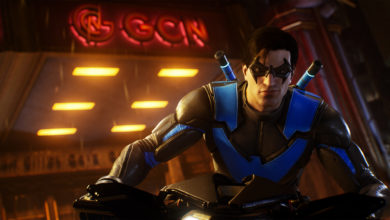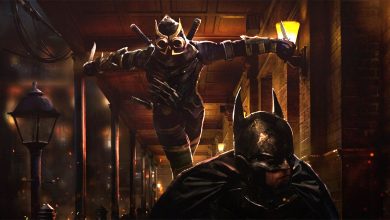The feeling is there with you all the time, and it doesn’t shy away from asserting itself. It is probably at its strongest when you stalk and pick off your enemies one by one. They’re aware, they’re clueless about what to do, and they’re scared witless. As their ranks dwindle, desperation joins fear. “How are you doing this!!?”, screams your soon-to-be final victim. Pure terror meets the rising crescendo of the brilliant background score. A smile will play on your lips as you decide how to dispose off this final fool, while calmly watching him from your vantage point. That’s when you’ll feel it the most… that awesome feeling of being Batman.
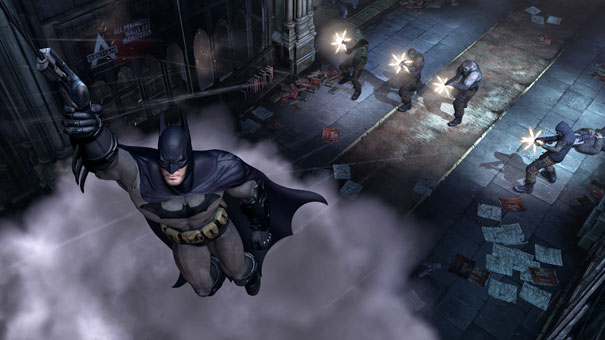
That, in my opinion, has been the driving force behind Rocksteady’s Batman games. Every facet, every characteristic and every detail stems from the single-minded focus on making the player feel like Batman. It worked beautifully in Arkham Asylum, and it works even better in Arkham City. But being Batman is easier said than done. If you thought the Dark Knight had it rough in Arkham Asylum, wait till you play Arkham City. Not only is his identity compromised, but things go south pretty early and time begins to run out for Batman. The story brings together Hugo Strange, the Joker and others from Batman’s rogue gallery and twists and turns its way to a breathtaking conclusion. That said, it is not quite as well paced as Arkham Asylum’s story, as the two primary threads of the storyline only begin to come together towards the end.
Part of it is because of the shift to a more open world. While not quite as large as other sandboxes, Arkham City’s map is considerably larger than Arkham Asylum’s, and is absolutely jam-packed with things to do. Many of the villains only appear in side missions, which are rather compelling. So while the main story always has you pressed for time, it is very easy to get distracted by ringing telephones that have you racing across the city in a bid to stop a murderous psychopath, or an uneasy alliance with a former enemy, or the sheer abundance of the Riddler’s challenges strewn across the city.
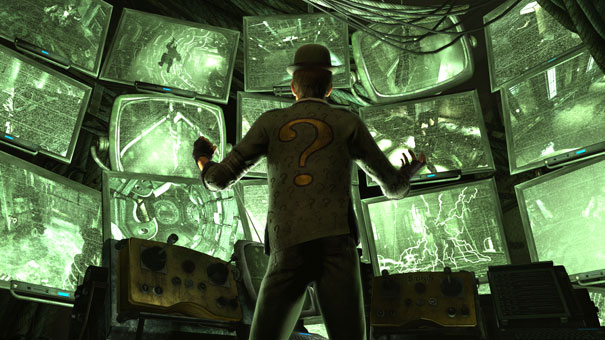
In fact, the Riddler has got a lot of attention in the sequel. Not only does the player have a whopping 440 Riddler challenges to solve (some of which are real head-scratchers), but even a side mission that puts a face to the voice that was heard so much in Arkham Asylum. The challenges also unlock character models, concept art, challenge maps, and even mini-stories about many of the characters in the game, including one that explains how the Riddler got to place so many of those shiny green trophies around the city in the first place.
Captivating and numerous as the Riddler Challenges are, you will still spend the meat of the game introducing thugs to your knuckles. The combat, like in the previous game, is a matter of timing. One button for attack, one button for counter, and a bunch of baddies. While they start off easy, the fights get progressively more complicated as more variations are introduced in enemy types. The game introduces knife-wielding enemies, armoured enemies and shielded enemies. Mix and match them with a bunch of regular guys, and you have a hectic fight on your hands. I’ve always appreciated Rocksteady’s approach to combat. Rather than relying on enemy AI that acts purely on strength in numbers, it relies on knowing all your moves and when to use them. The same extends to boss encounters. While never quite that difficult to deal with, the task is to figure out what exactly you have to do (in most cases). There’s a definite improvement over Arkham Asylum, but the game’s over-eagerness to tell you what to do ruins the fun sometimes.
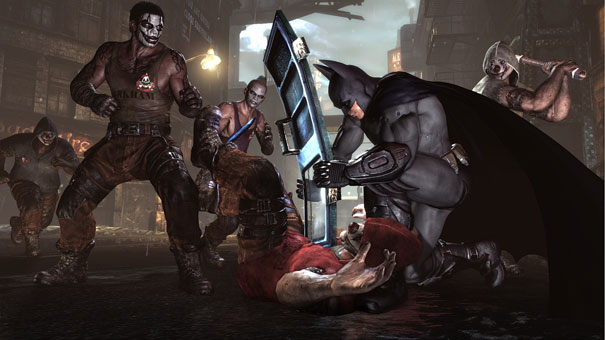
Your repertoire of gadgets and combos to take on the super-villains and their cronies has also been expanded. All the gadgets from the previous game are available from the outset, and new ones are also introduced as you progress. My favourite is the disruptor, which can be used to jam guns without its wielders knowing about it. I love to jam the gun of the last enemy, and then walk calmly towards him as he struggles with his gun. Some of the gadgets, such as the explosive gel, also have a quick use option now and can be used during combat.
Like combat, stealth and navigation also include improvements and new features. Enemies seem to have learned from their harrowing experiences in the previous game. During stealth segments, enemies wearing infra-red goggles can scan gargoyles and vantage points and spot you unless you get a specific upgrade to counter this. Sometimes, the area features an enemy carrying a jammer that disables Batman’s detective mode. In order to proceed, the player must take out this enemy first.
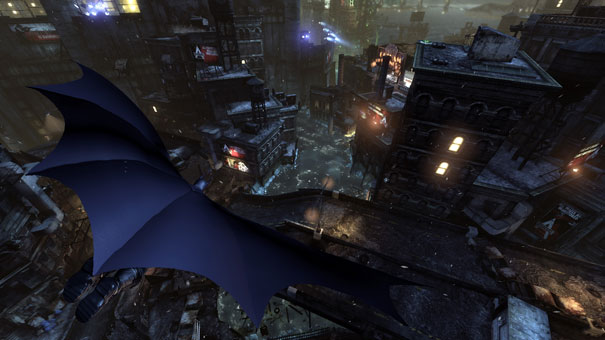
By virtue of the size of Arkham City, navigational features bring dive and grapple boost (available after completing a side mission) to the mix. Combined together, moving swiftly across Arkham City becomes a breeze. Of course, the context for all this action, Arkham City, is the real star here. Every nook and cranny oozes personality, and there’s an amazing amount of fan service here. Get around and you’ll discover the fading poster for the Flying Grayson’s circus act; the corner of an intersection where the closed down Italian restaurant owned by the Maroni family still stands; or a quiet moment of remembrance at Crime Alley, as you kneel at the spot where it all started. The art and the graphics engine powering it are nothing short of exquisite, be it the industrial district and the steel mill that is the stronghold of the Joker, the Museum and the Iceberg Lounge occupied by Penguin’s men, or the mysterious Wonder City buried deep under the surface of Old Gotham.
The main story will take you about ten hours to finish, but there’s plenty of additional content that will keep you busy for hours. The game features four small playable segments as Catwoman, which tie into the main story. This content is available as free DLC with the new copies of the game, and paid DLC for used copies. While this part of the game is definitely non-critical, it is still a questionable choice, as the portion definitely adds another perspective to the plot, not-to-mention, a villain whom you will not meet if you play only as Batman. Once you are done with the game, there are the aforementioned Riddler Challenges to go after, challenge maps, and a new game plus mode, where you start off with all the upgrades from your initial play through against tougher enemies and no counter indicator during fights.
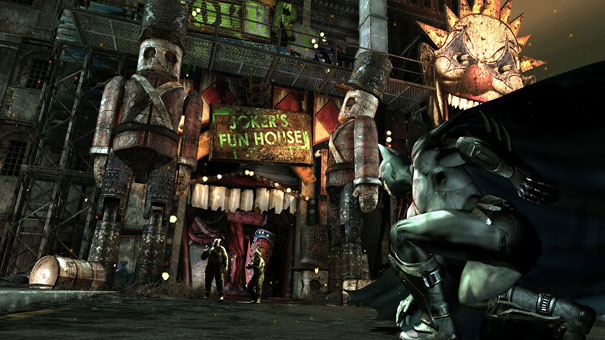
Conclusion
Batman: Arkham City had a tall order to fill. Where do you go from a near-perfect Batman: Arkham Asylum? Rocksteady wisely chose not to reinvent the wheel, instead making the sequel bigger and deeper. Minor niggles aside, their steadfast devotion to the core design philosophy behind the series has paid off with a sequel that is a significant step-up from its predecessor. Every outcome and every success hinges on one thing and one thing alone: your ability to think and act like Batman. There is no greater compliment I can give this fabulous game and the talented development team that brought it to life.

